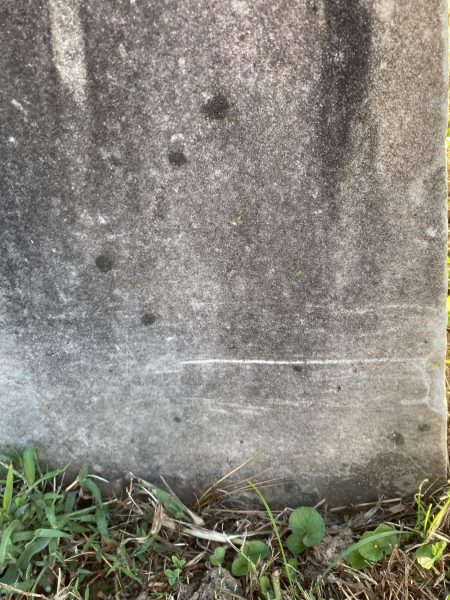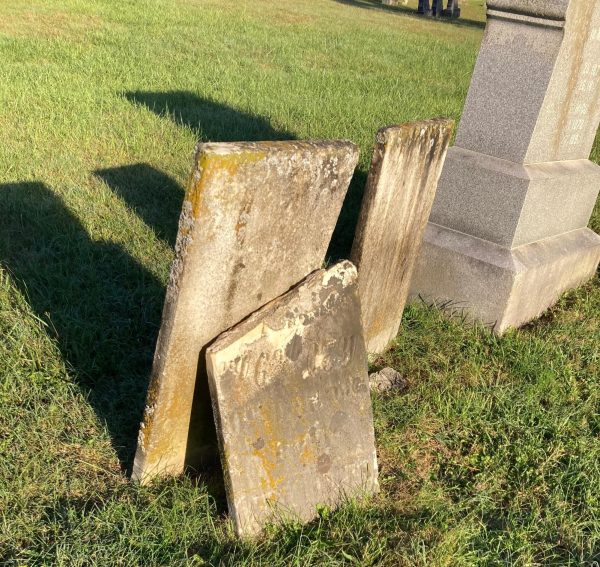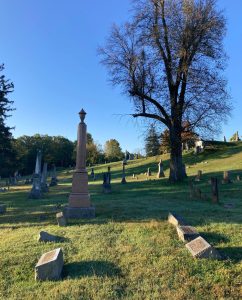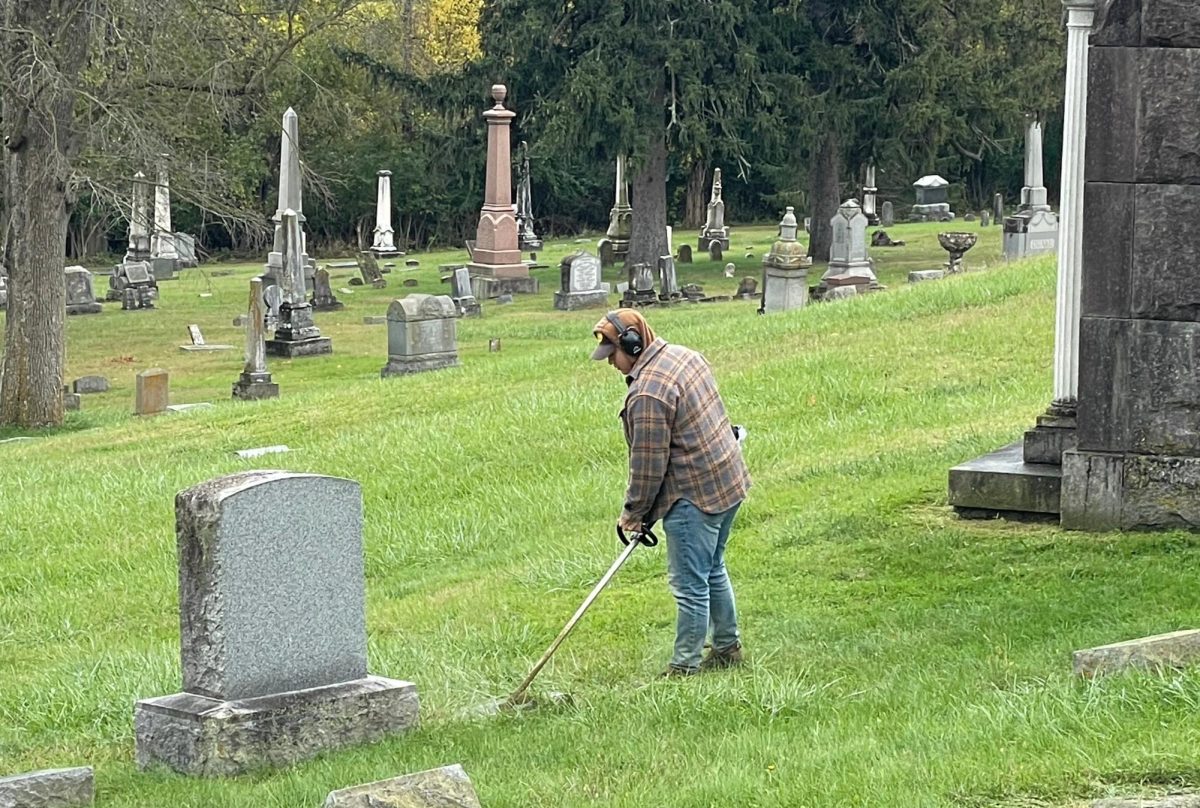On a cool fall morning, with dew still on the grass and the tombstones of Oxford Cemetery casting shadows on the rolling hills of the grounds, it is quiet.
Almost.
In the distance, the drone of a weed eater is faintly heard. At the crest of a hill, seasonal cemetery maintenance workers Blake Detherage and Connor Puckett work their way around the tombstones with weed eaters in hand.
“It cleans up the stones really nice,” Detherage said. “They look more vibrant.”
Weed eating usually comes first – given that the morning dew on the grass has evaporated. The cut grass around the perimeter of the tombstones acts as a “borderline” for mowing, said Detherage.
“So we don’t bump the headstones [or] knock headstones over,” Detherage said.

Mowing the grounds of Oxford Cemetery is its own challenge. Unlike Woodside Cemetery, which is comparatively flat, the tombstones of Oxford Cemetery sit on valleys, hills and hillsides.
“You got to weave in and out,” Puckett said. “[It’s a] very time consuming … tedious process.”
With a total of three seasonal workers, as well as Mike Green, the City of Oxford’s grounds and cemetery supervisor, the crew is hard pressed to cover everything in a week’s time, Green said.
This means weaving between more than 6,000 tombstones, as well as leaf blowing and picking up any resulting storm debris on over 20 active acres. For Green, this also includes working with the City of Oxford’s finance department, coordinating burials with funeral homes and assisting individuals with finding burial plots.
Green encourages families looking for a plot to pick areas of the cemetery that are flat and more newly developed. The older tombstones of the cemetery tend to be on hillsides, where vaultless graves settle unevenly and the sloped angle of the hill causes the tombstones to be increasingly precarious.

“Sometimes you’ll come out here and you’ll find a headstone or a monument that has fallen over or something like that,” Green said. “… And a lot of that stuff comes from the freezing and thawing in the wintertime.”

General wintertime cemetery maintenance “sucks,” according to Green. Besides fewer daylight hours and the potential for frozen ground, a burial that might take less than an hour in ideal conditions can stretch to two hours just for preparation work in the winter.
“It’ll be so daggone wet that we have to lay boards or mats out to where we’re digging,” Green said “… [or] you may have to come in and pump the grave out, because of the water that comes in.”
But even with this grunt work, Green takes it in stride.
“When younger people ask me, ‘What do you do?’ … [I respond], ‘Well, I bury people … Somebody’s got to do it,’” he said.








